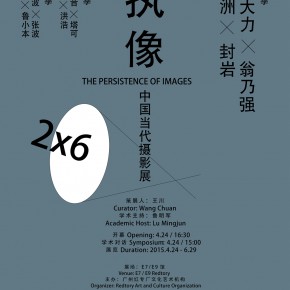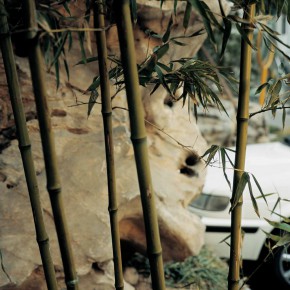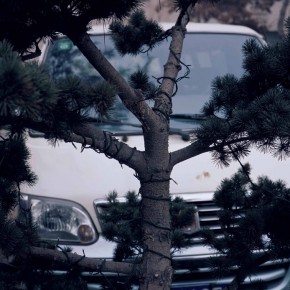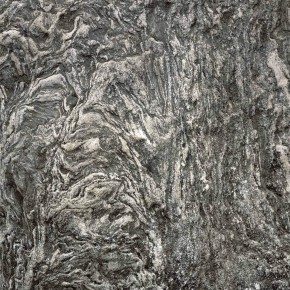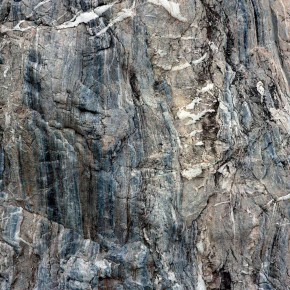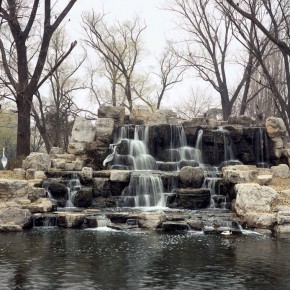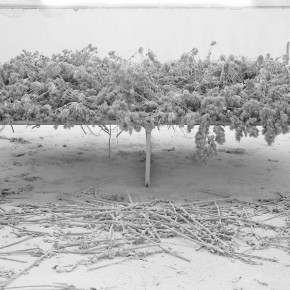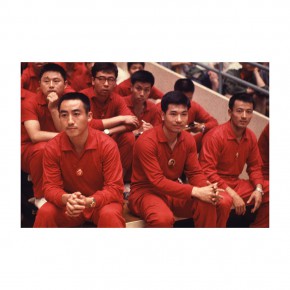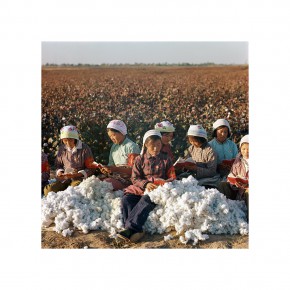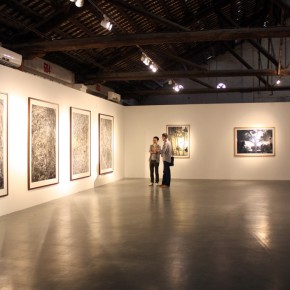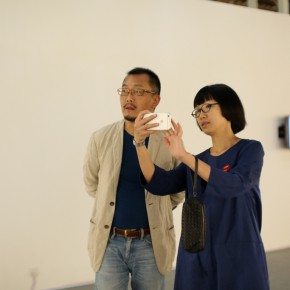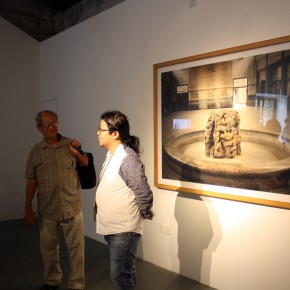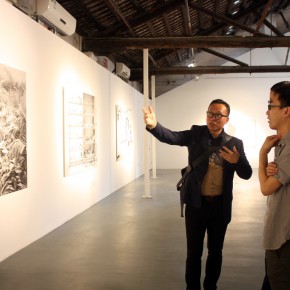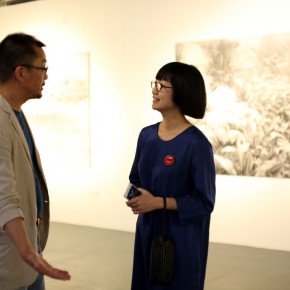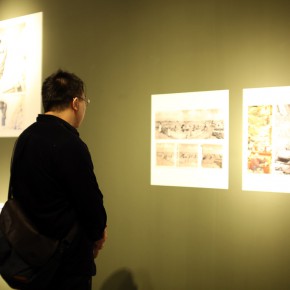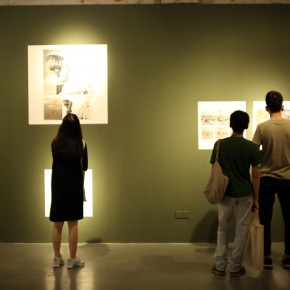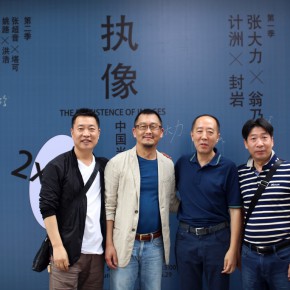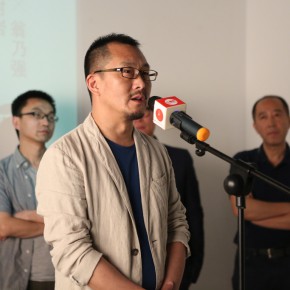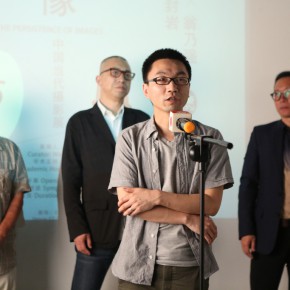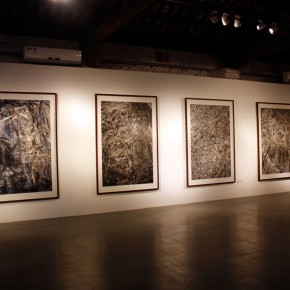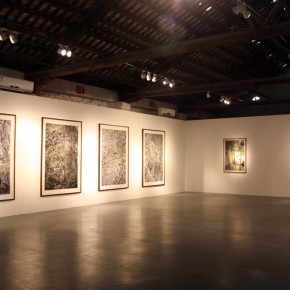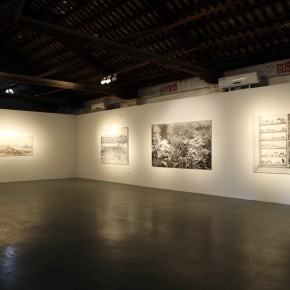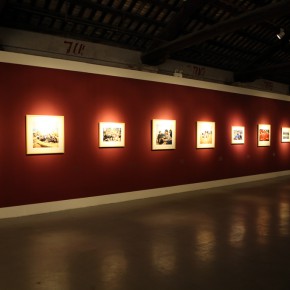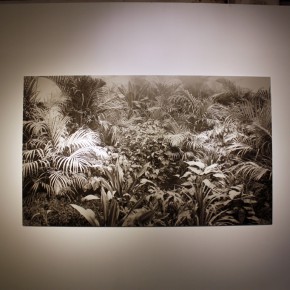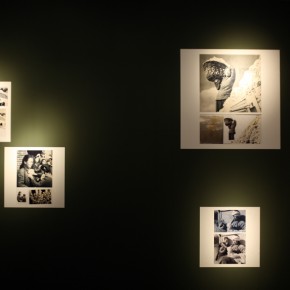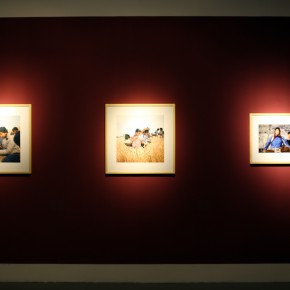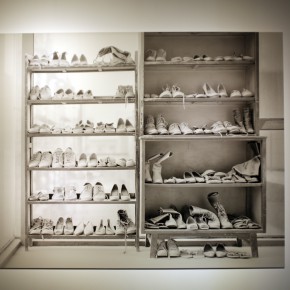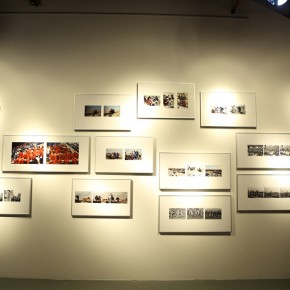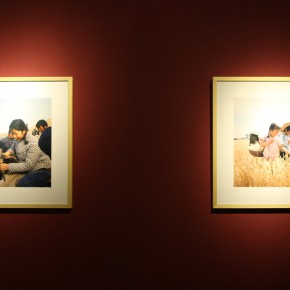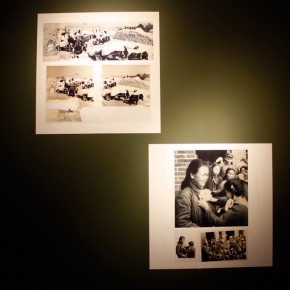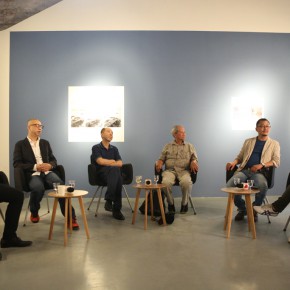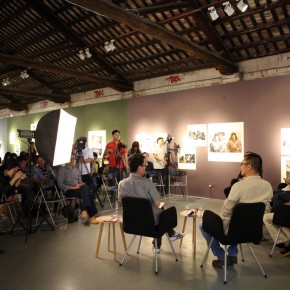
Today, our understanding about photography is not what we perceived in 19th century and it is no longer just a visual technique or a representational tool but a cognitive deployment. With the development of techniques, photography has been updated and upgraded numerous times. Thus we get used to calling it video or illustration. In fact, no matter how dramatic the changes are, what photography represents is still not real. The representation itself, however, is real. In other words, it is not the target of the vision or camera but the vision itself and it is the embedded body and ethic awareness that give it intrinsic authenticity. Therefore, neither vision nor video language is pure, as each is a complexity and mechanism.
Organized by Redtory and curated by Wang Chuan, the contemporary photographic exhibition –the Persistence of Images: 2×6 is motivated by Redtory’s advocate to observe the cultural transformation under the background of industrialization and post-industrialization. Themed with history, time, memories of the city and daily lives, this exhibition presents an understanding of photography and the experiments in each medium from different perspectives. 12 artists were invited to participate with each of them embracing an unique working methodology and they are Weng Naiqiang, Zhang Dali, Ji Zhou, Feng Yan, Zhang Chaoyin, Ta Ke, Yao Lu, Hong Hao, Feng Mengbo, Zhang Bo, Liu Zheng, Lu Xiaoben. Their understandings toward photography or video are divergent, thus, the culture embodied in their works are different.
Undoubtedly, it is invalid to say that there is a broadening of the scope of photography or experimenting in video language. Every artist has to face reality either through the camera or out of it and they always focus on the concept of “real” that is shaded or abandoned by the surroundings. Thus, either the rediscovery of history and memory or the research of the visual knowledge cannot remove the idea of being related to the motif of vision and reality, just as the artists introspect the contemporary politics or culture. Through such a vision, we can gain an insight into their understanding toward history, ideology and their own work. Thus, even the experiment in photographic techniques is an approach that relates art with reality.
By Lu Mingjun
March 30, 2015
The Persistence of Images: Photography 2×6
As talking to the relations between technology and photography, American art critic Rosalind Krauss indicates that photography is usually regarded as a medium whose expression and language are highly promoted with the development of the technology. What should be noticed is that such development is neither accomplished at one stroke nor confined in a certain historical stage, but it accompanies along the whole journey of the development of photography. With the constant upgrading of technology, people who are engaged in photography has been insisting on perceiving the world as a whole by such an art form as well as promoting their understandings toward it from different perspectives, by which people accumulated abundant experience for this medium.
Today, publics are accustomed to be aware of or comprehend the unseen or unknown fields by photography itself or through its outcomes–photos, and such practice has formed an irreplaceable angle to view and an indispensable way to think. People are willing to treat cameras or photos as the replacements of their eyes or heads and are addicted to such “highly rational” mechanism where they have their sincere belief and insistence. The charm of such mechanism lies in the unintentional ignorance or even the abandon of questioning and criticizing photography itself or people’s attitudes toward it. Seriously, we cannot blame such loss on the arrival of 21stcentury as it emerged with the debut of photography and has been covered beneath the aura of its soaring development. Unfortunately, we have to admit that this problem has been embedded in our visual lives and become increasingly obvious in present society.
Dating back to the days when photography won its mass market after the joint and flourishing application of the digital technology, computing systems and the Internet, those applications generated an intensive technical revolution which broke the invisible wall of photography. The traditional system of photography images is a circulation of “production - view- appreciation–view- spread”, which had been completely split and people were free to directly and deeply step in the whole procedure at any stage. Thus, the above mentioned problem walked out of the aura and became a public concern. People who were once excluded from photography irresistibly enjoyed the freedom and fairness that the “developed photography” brought and photography became more applicable and inexpensive as well. Such revolution brought by “the Trinity” (the above three applications) has completely reformed traditional photography. Just like the Walls of Constantinople, whose religious meanings (to Christian) and practical applications (to Constantinople and Byzantium) were once of vital significance. However, in 1453, with the appearance of the urban cannon, those walls rendered it worthless under such advanced technology. But the truth is that the loss of the wall does not mean the fall of one city. Similarly, people’s easy access to photography does not mean a recession but a convenient way to get in touch with the art.
Until the late 20th century, there was still a gap between public and photography above which there were aesthetic glories brought by pioneering photographers. Photography has successfully proved itself as an art form and eliminated any argument on this issue. Thus, Baudelaire’s interrogation was harsh but meaningless. He was just extremely worried about the possibility that one day photography would become art because of the features that photography had, but he has never thought about how art can proceed in such an opposite way. In fact, price should be paid for the deep integration between art and photography since it has changed a lot of things, ranging from photographers to assessment criteria as well as the operating and presenting methods, which in turn becomes problems and concerns that photography has to face at present days. As photography is gradually away from its traditions, there are a large number of desperate followers believing this is a rebel. People who are immersed in the Golden Ages cannot help crying that photography does not exist anymore. While there are another group of people who are excited about this tendency and they firmly believe that it means the prosperity and a better future. Anyhow, we should not deny that this medium is much more versatile and valued than that at any stage in the history.
It seems that any change on photography is closely related to the arrival of digital era. Just have a look at the digital darkroom, it eases the mysterious atmosphere that traditional darkroom created. Like a rebel, we can witness the recurring tendency for the revival of traditional materials such as LOMO, photographic film, Black& White photograph and wet plate with the intensive trend of digitalization and visualization. Thus, in less than 200 years of history, photography has never been replaced but constantly updated and upgraded itself through all kinds of technical revolutions and progressions, which is a fact that everyone who is involved in this field has to accept and respond. Individual’s reactions and understandings toward this medium have been accumulated to form numerous of practical outcomes and perceiving experience. Thus, it is a necessary approach to inspect individuals when it comes to the understandings toward all kinds of phenomenon concerning photography
It is said by Buddhist Master Hong Yi that if you merely focus on the surface, there is still a distant way from the truth. From my own perspective, it symbolizes that in terms of things and people we encounter, if we only see what they seem to be, we will never know the truth even though they are just standing in front of you. The sentence is simple but incisive. Unfortunately, images of photography has been precisely incorporated with visions, in another words, the vision has been shouldered by images or photos. Although we gradually know that even photography could bring us to where the reality is close by, it still cannot be equal to reality. Even photography has always been accompanied with criticisms, now we still indulge in images of photography and could never escape from the palace of visions. Indeed, it is hard to imagine a world without photography and pictures. Insisting on the surface of images has become extremely popular since photography appeared. The wisdom of giving a sharp warning seems to be inferior to providing a picture, even if the picture is a misunderstanding.
Even though we admire ancestor’s discerning eyes, we still cannot or unnecessarily deny how photos could contribute to visions and our recognition of the world and self-devotion as well. When insisting on images turned to be an extension of sensation, a constitution of life, or even the truth and when we decided to turn the real world to a second hand one by the means of taking images, the meaning of Buddhist’s chant is more of a philosophic warning. Fortunately, surveys, meditations, discoveries and proofs, have always been the core of creation and motivation of numbers of practitioner. It runs through and influences the past, present, and future of photography, which is also the most common trait of all the participating artists.
Most of Weng Naiqiang and Zhang Dali’s works are involved with history. However, they are not simple recorders and revolutionists. Their distinct attitudes towards history and photography constituted their enormous difference as well as a motif of History and Image. Mr. Weng has been devoting himself to paint historic events, while Mr. Zhang concentrates more on the results. They both show us the eternal but fragile relations between history and images. It is nothing to do with overturning the history itself but to reveal a historic view. As the witness of the history, these images are the motif of the circulation and will still make sense. The dialectic analysis is exactly a way of blending and integrating.
The exquisite quality and alienation that Ji Zhou and Feng Yan’s works render involve their caution and criticism towards the traditional way of appreciating photos. However, the similarities cannot conceal the different methods they utilized for the same ultimate purposes. Feng Yan has hidden his wisdom in his selection of photographic objects, which is his rule, whereas Ji Zhou blends his sensitiveness and critical thinking into objects constructing and way of appreciating photos, which is his working principle. Thus, when we are trying to sense their consistency of pursuing the visual effect, precisely controlling the appreciating logic, and even simultaneously choosing the peaceful way, we cannot but have to be confronted with their obvious distinctiveness and with a hidden strength with softness and persistency.
Professional Photographer Zhang Chaoyin, has been engaging in humanistic photography, geographic photography, cultural photography and religionary photography. Take, a young artist roams around traditional plastic arts, new media and cultural diversity between east and west. Their dialogues developed on the basis of visual difference, but still held some resemblance. They share with the same accumulation far beyond photography, the same challenge to photographic materials, the same rigorousness of techniques and qualities. Either discovering the ancient poetry or digging out the secret Tibet, their works consistently tell us photography is still the most vital way of recognizing the world and inspiring wisdom no matter how time changes.
As the most important practitioner in Chinese contemporary photography, Yao Lu and Hong Hao, with the academic background of Wood Block Printing in Central Academy of Fine Art, demonstrate us two diverse artistic forms. Hong Hao integrates Chinese traditional scroll with his thoughts and feelings about time, which have also been combined with western photographic medium. Meanwhile, Yao Lu perfectly illustrates the theme of “replacement” and “masking” of contemporary arts by the means of Landscape Painting of Trash. Classical structure covered with contemporary surface indicates traditional plastic arts and photographic proficiency, as well as her ideology and method originating from personal culture complex. The works bring us her love and worries of Chinese classical art, and her cautiousness when applying contemporary visual medium as well.
Feng Mengbo is a representative and pioneering artist who devoted himself into digital art. Photography is a frequent warm breeze in his glorious interactive game design. If you have just experienced his virtual mirror first-person game, and promptly put on eyeglasses with the color of red and green reading a photo series of Shanghai old museum, you will then experience a force of time exchanging. It is from the combination of digital techniques and profound background of plastic art. Now his new work shows us a real parallel world based on electric game experience with the form of video recording and photography. On the other side of this parallel relation, Zhang Bo, whose works mostly derive from daily life and internet experiences, escapes from a long-term painting discovery and starts a personal research on video on the basis of a wide range of images and a unique angle.
Liu Zheng, as an icon of new photography movement of China in the 1990s, has been highly proficient in photography since he has been immersing himself in technics and the language of photography. However he attached his artworks with Wechat without hesitation recently, and then launched a public art project called Selfie. The essence of Selfie derived more from his courage of giving up and embracing, as well as the convenience of cross media technology, rather than from his photos. Similarly, Lu Xiaoben, who spares no efforts to embrace mass media, owns an inherent sensitiveness to mass media, which is also the reason why he has quickly adapted himself and his works to Chinese culture and the society. He applied mass media as his artistic source and targets. Meanwhile, with a simple but exquisite way, he built up a complicated holistic phenomenon that is a feature of the age of media.
They have distinctive identities and were born in different ages. They possess various opinions toward photography, and their ways of taking photos are virtually diversified. Nevertheless, they repeatedly make inquiries about the substantial questions of photography and images with their own approaches. They are persisted but never obsessed. If the research on a particular case can explore the real meaning of an individual’s thoughts and the content of a practice, it is more valuable to investigate such case in all kinds of relations and comparisons. Thus ,the similarity and distinction of artist’s medium situation, object choice, strategy, and aesthetic judgment will be definitely enlarged and accentuated, which is exactly the origin of this exhibition’s basic structure ------ twelve artists/photographer, 6 relatively independent but interactive dialogues, alternated emerged within three rounds.
For people who live in the era flooded with media and image, neither persistence in images nor insisting on vision is the way we reach the shore of enlightenment; however, we still cannot give it up. It is getting harder to criticize and understand the easy approach to photos, whereas, it is of vital significance as well. Thoughts and practices of all the individuals, who keep being alert to such difficulty and consistently give responds to it, are becoming more intensive and meaningful, just like what those artists do.
As the curator, I have to mention that without the conceptual consensus with Redtory or its effective cooperation, all the above ideas and curating plans would probably collapse.
Wang Chuan
February 6th, 2015
At Wangjing, Beijing
About the exhibition
Curator: Wang Chuan
Academic host: Lu Mingjun
Artists: Weng Naiqiang, Zhang Dali, Feng Yan, Ji Zhou
Symposium: 2015.4.24 / 15:00
Venue: RMCA
Opening: 2015.4.24 / 16:30
Venue: E9, Redtory
Duration: 2015.4.24—6.29
Venue: E7 / E9, Redtory
Organizer: Redtory Art and Culture Organization
Courtesy of the artists and Redtory, for further information please visit www.redtory.com.cn.


